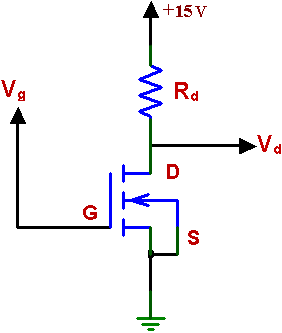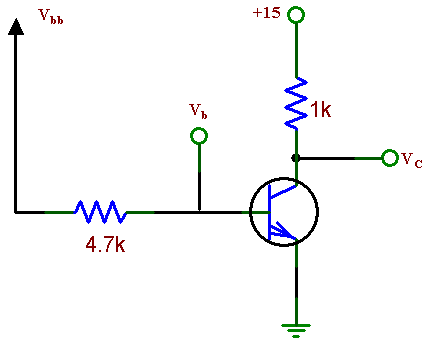|
ECE 291 -LABORATORY X THE TRANSISTOR COMPARISON OF TWO BASIC TYPES: MOS AND BIPOLAR
OBJECTIVES Familiarity with MOSFET, the most used type of transistor today and its comparison with BJT. Demonstrating extremely high dc impedance of the MOSFET gate. Exploring linear characteristics and switching behavior of the transistors. MOSFET as voltage controlled device and BJT as current controlled device. MOS analog switch.
INTRODUCTION There are two most common transistor types today: the Metal -Oxide - Semiconductor or MOS and the Bipolar Junction Transistor or BJT. The MOS is also designated as MOSFET because it is a field effect transistor (FET). A great majority of both types are made from silicon (Si) and a small fraction (about 2%) from gallium arsenide (GaAs). The BJT dominated the market initially but now most of the transistors, particularly in integrated circuits, are of the MOS type. The BJT, still holds its own, particularly in some analog and high power circuits. While most transistors of any type are made today as elements of integrated circuits (ICs), which can contain millions of circuit elements, single or discrete transistors are still useful in many applications like high frequency or power units. In this laboratory we concentrate on the MOS transistor and compare it with the BJT. The important difference between the gate impedance of MOS and the base impedance of BJT is emphasized.. You will experiment with an N-channel enhancement mode power MOSFET and an npn type BJT.
PRELAB 1. A MOSFET is characterized by a very high input (gate) resistance. Does it mean that no appreciable current ever flows to the gate? Explain. 2. Draw schematics of circuits for experiments with a MOSFET described in sections 1, 2, and 3, below. References: 1. T. C. Hayes and P. Horowitz and The Student Manual for the Art of Electronics Cambridge University Press 1989, pp. 255-260.
LABORATORY Equipment needed from the stockroom: Parts kit, proto-board, analog universal meter, resistance substitution box, leads, scope probe.
1. POLARITY OF THE BIPOLAR TRANSISTOR
|
||||




